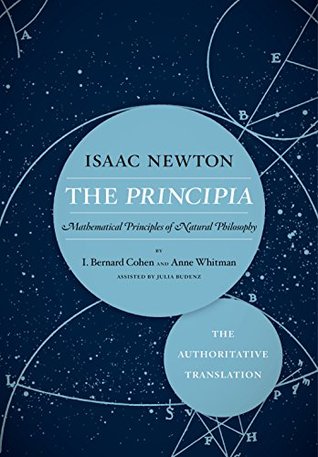More on this book
Kindle Notes & Highlights
by
Isaac Newton
Read between
June 9, 2014 - July 8, 2018
“Each time a planet revolves it traces a fresh orbit, as happens also with the motion of the moon, and each orbit is dependent upon the combined motions of all the planets, not to mention their actions upon each other.”
“Unless I am much mistaken, it would exceed the force of human wit to consider so many causes of motion at the same time, and to define the motions by exact laws which would allow of any easy calculation.”
We see right before our eyes, since mathematics drives away the cloud.
SINCE THE ANCIENTS (according to Pappus) considered mechanics to be of the greatest importance in the investigation of nature and science and since the moderns—rejecting substantial forms and occult qualities—have undertaken to reduce the phenomena of nature to mathematical laws, it has seemed best in this treatise to concentrate on mathematics as it relates to natural philosophy.
Michael A. Sherbon liked this
I earnestly ask that everything be read with an open mind and that the defects in a subject so difficult may be not so much reprehended as investigated, and kindly supplemented, by new endeavors of my readers.
It is the province of true philosophy to derive the natures of things from causes that truly exist, and to seek those laws by which the supreme artificer willed to establish this most beautiful order of the world, not those laws by which he could have, had it so pleased him.
Michael A. Sherbon liked this
Having unlocked the gates, therefore, he has opened our way to the most beautiful mysteries of nature. He has finally so clearly revealed a most elegant structure of the system of the world for our further scrutiny
Definition 1 aQuantity of matter is a measure of matter that arises from its density and volume jointly.a
Absolute, true, and mathematical time, in and of itself and of its own nature, without reference to anything external, flows uniformly and by another name is called duration.
Absolute space, of its own nature without reference to anything external, always remains homogeneous and immovable. Relative space is any movable measure or dimension of this absolute space; such a measure or dimension is determined by our senses from the situation of the space with respect to bodies and is popularly used for immovable space, as in the case of space under the earth or in the air or in the heavens, where the dimension is determined from the situation of the space with respect to the earth.
Absolute motion is the change of position of a body from one absolute place to another; relative motion is change of position from one relative place to another.
how to determine true motions from their causes, effects, and apparent differences, and, conversely, of how to determine from motions, whether true or apparent, their causes and effects. For this was the purpose for which I composed the following treatise.
Law 1 Every body perseveres in its state of being at rest or of moving auniformly straight forward,a except insofar as bitb is compelled to change citsc state by forces impressed.
Law 2 A change in motion is proportional to the motive force impressed and takes place along the straight line in which that force is impressed.
Law 3 To any action there is always an opposite and equal reaction; in other words, the actions of two bodies upon each other are always equal and always opposite in direction.
Scholium The principles I have set forth are accepted by mathematicians and confirmed by experiments of many kinds. By means of the first two laws and the first two corollaries Galileo found that the descent of heavy bodies is in the squared ratio of the time and that the motion of projectiles occurs in a parabola, as experiment confirms, except insofar as these motions are somewhat retarded by the resistance of the air.
And nature knows no limit.
Therefore because of the analogy that exists between the propagation of rays of light and the motion of bodies, I have decided to subjoin the following propositions for optical uses, meanwhile not arguing at all about the nature of the rays (that is, whether they are bodies or not), but only determining the trajectories of bodies, which are very similar to the trajectories of rays.


